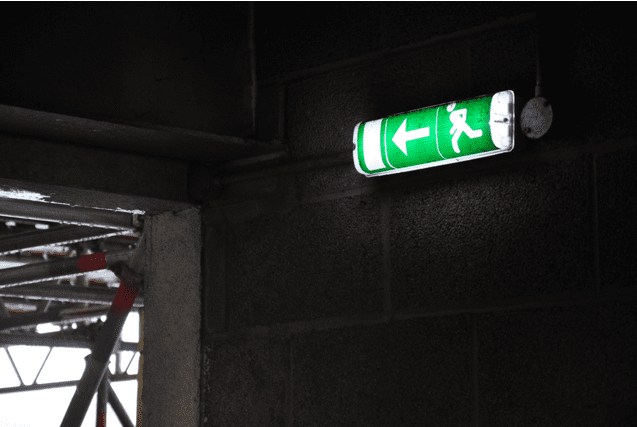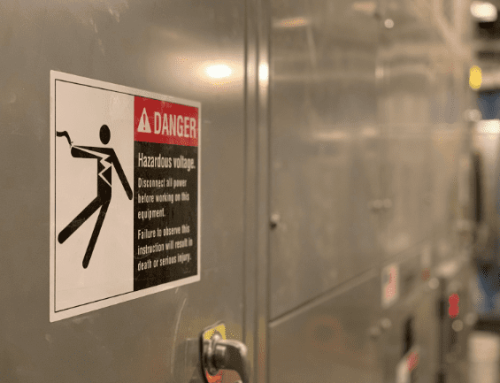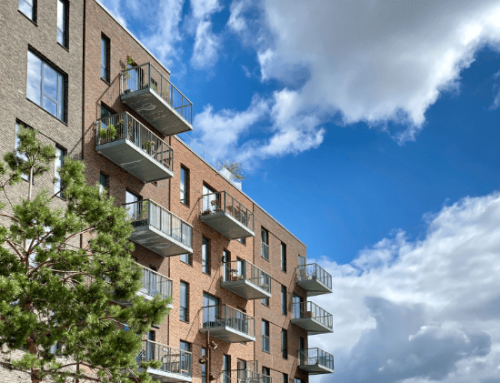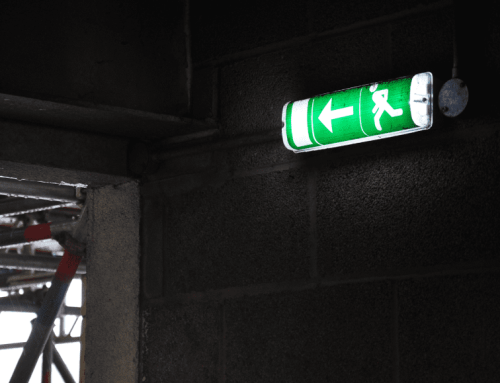Given that residential buildings are the typical location of fires, fire safety and health and safety in apartment buildings with many households is a very significant issue.
As a result, it’s crucial that every person knows the fire safety precautions in their building, and how to flee if a fire breaks out in their flat or building. Additionally, building managers and tenants alike have legal obligations with regard to fire safety. Tenants should be aware of these obligations and fire safety measures.
Everyone finds the idea of a house fire terrifying, but those who live in apartments or blocks of flats frequently experience this fire risk anxiety more intensely.
In apartment buildings, fire doors are essential because they contain the spread of fire and facilitate a safe evacuation for all occupants. All apartment buildings are subject to stringent construction codes that regulate the usage of fire doors; flat entrance doors must provide 30 minutes of fire resistance.
In this guide we’ll explore the importance of fire doors and whether they’re a legal requirement in flats.
What causes fires in blocks of flats?
The majority of flat fires are typically blamed on irresponsible behaviour by its residents. Among them are cigarettes that are not properly extinguished, ignored, and thrown out of windows.
A block of apartments and a lifetime’s worth of possessions can quickly be destroyed by overloaded sockets, resulting in financial misery, disturbed lifestyles, and incurred costs.
Residents can take safety precautions to make sure that no fire starts as a result of an overloaded electrical socket.
An additional reason for electrical fires in apartments is outdated wiring. The wiring in older homes is insufficient to store the increased number of electrical equipment that typical families use today. These include widescreen televisions, computers, microwaves, and air conditioners.
When a circuit is overloaded by too much electricity, breakers are designed to trip. However, obsolete, old breaker boxes frequently have connectors that are worn out and rarely function, overloading the systems and leading to an electrical fire.
Why are fire doors so important?
A building’s ability to contain a fire is aided by a fire door, which typically provides 30 or 60 minutes of fire protection, providing an essential window of time for evacuation.
In the United Kingdom, fire safety doors are a legal requirement in any communal or commercial buildings, including apartment complexes. Depending on the material, they typically lower the heat from the fire by around 90%, making it safe for anyone trapped in adjacent rooms to leave and call for help.
Strict building regulations that regulate fire performance and location apply to fire doors in multi occupied residential buildings. These requirements must be fulfilled and upheld whether constructing a brand-new apartment complex or maintaining an already-existing structure.
How do fire door regulations meet legal building regulations?
Building laws require that fire doors are installed as part of a door set, which includes the frame and ironmongery. Accordingly, all components of the door, including the door frame, closers, ironmongery, signage, and hinges, must have the same level of fire resistance certification as the door itself.
In order to create a seal and stop smoke from entering the room, the door must also have intumescent strips and cold smoke seals fitted to both vertical and the top horizontal edges of the door or doorframe.
To stop fire and smoke spreading through a building, fire doors must close automatically by a self-closing device. Fire doors can only be held open by a certified retainer that is made to close automatically. Most fire doors Most fire doors are FD30 or FD60, which denote 30 and 60 minutes of fire resistance, respectively.
4 more ways to improve apartments and flats fire safety
Landlords should have a fire safety checklist which maps out what they are legally required to do to lower the risk of fires. Here are some of the most important things:
1. Smoke alarms
Smoke alarms should be fitted in your apartment. Your landlord should be responsible for ensuring the correct fitting of these alarms; however, it is your responsibility as a tenant to change the batteries if needed and to test them regularly, ideally once per week.
The building may have a fire alarm system fitted. This will depend on the level of risk presented to occupiers when needing to evacuate the building. Where a fire alarm is fitted, it is generally the responsibility of the residents’ management company and/or landlord to maintain the system and carry out regular testing.
2. Clear escape routes and corridors
All protected escape routes should be sterile of unnecessary fire loading (things that can burn), and clear of any obstacles that present a trip/fall hazard. The protected escape routes should be clear of these items to allow safe escape for occupants, and safe access for the emergency services. In the event of a fire where an escape route is filled with smoke, any items within these areas are unlikely to be visible to escapees and the fire service.
3. Maintain dry risers if you have them
‘Dry risers’ are installed in tower blocks that are taller than a specific height. Regular maintenance is required to ensure the fire brigade can pump water to various levels of the building in the case of a fire. It is generally the responsibility of the residents’ management company and/or landlord to maintain the installation and carry out regular testing.
4. Fire risk assessment
Depending on the height and number of floors of the block will depend on whether the apartment entrance doors are inspected. See “Fire safety in communal areas of flats FAQs” on the next page for further information on fire doors.
There is no legal deadline to meet, therefore how soon a fire risk assessment is assessed will totally depend on the specifications of your structure.
Need help with fire risk assessments?
It’s crucial to be informed of your legal responsibilities in regards to fire safety regulations before starting any necessary evaluations because landlords and property managers are legally required to complete fire risk assessments.
Scanlans provides fire risk assessments and inspections as a part of our property management services. Our team can help you ensure that your premises are secure and in accordance with all relevant legislation.
Get in touch today to find out more.
Are fire doors a legal requirement FAQs
What is a fire risk assessment for a communal area of flats?
Common stairwells and entrance halls, as well as other areas of a building that are used by everyone, are typically included by a fire risk assessment. The evaluation takes into account a building’s “general fire precautions” in the communal areas.
Who is responsible for fire safety in flats?
Residential building landlords, property managers and freehold owners have a legal obligation to see that a fire risk assessment is done to find and eliminate any fire risks and hazards, or to limit these as much as feasible.
Are fire doors a legal requirement in flats?
Fire doors are a legal requirement for flats which open onto communal areas shared with other tenants.
What are the legal requirements of The Fire Safety Regulations (England) Regulations 2022?
The Fire Safety (England) Regulations 2022 have been introduced. The Regulations that apply to England only are being introduced under Article 24 of the Regulatory Reform (Fire Safety) Order 2005 (Fire Safety Order) and came into force on 23 January 2023.
Below is a useful Government link for you to check your fire safety responsibilities. This will depend on the height/number of floors of your apartment block.
Check your fire safety responsibilities under the Fire Safety (England) Regulations 2022 – GOV.UK (www.gov.uk)









